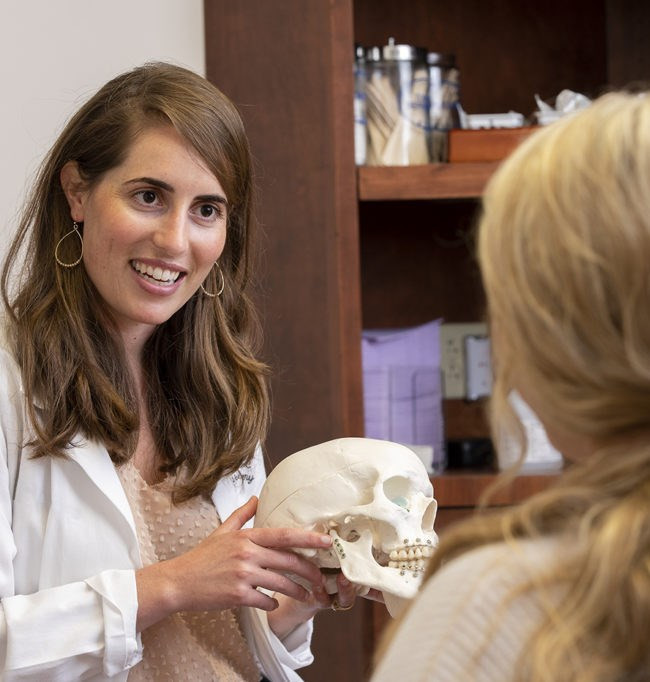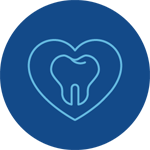Get Relief from Jaw Pain
The temporomandibular joint (TMJ) is located on each side of the face and connects the jaw to the skull. You can easily find it by placing your fingers in front of your ears while moving your mouth open and closed. This joint functions like a hinge and is crucial in everyday activities such as eating, speaking, swallowing, and breathing. When the TMJ is not working correctly, it can result in chronic jaw pain, difficulty with mouth movement, sensitivity in the teeth, and other uncomfortable symptoms. A specialist should assess TMJ issues, such as those at the Carolinas Center for Oral & Facial Surgery.
Meet Our Specialists
Our skilled oral and maxillofacial surgeons provide a comprehensive range of treatments for TMJ disorders. Whether you need relief from mild discomfort or a complete solution for chronic jaw pain, we have the right treatment option for you.
Common Causes of TMJ Disorder
While the direct causes of TMJ disorder are unclear, research suggests that a combination of factors may prompt this uncomfortable condition to develop. Continual jaw clenching, teeth grinding, and excessive strain on the jaw may cause TMJ disorder, as well as other aspects such as jaw misalignment, disc erosion or displacement, and trauma to the jaw, head, or neck. Other health factors like disease, arthritis, infections, genetics, and hormones may also play a role in the development of TMJ disorder.

Common Symptoms of TMJ Disorder
The temporomandibular joints—or TMJs—are strategically designed to support constant motion, allowing us to speak, chew, talk, and open our mouths wide without discomfort. However, when the joints are damaged or misaligned, you can experience discomfort, pain, and other troublesome symptoms. These include:
- Chronic headaches or migraines
- Facial pain and/or soreness
- Jaw pain and/or soreness
- Grating, clicking, or popping sounds when you open and close your mouth
- Jaw locking when you open and close your mouth
- Ringing, pressure, or pain in your ears
- Pain behind the eyes
- Sinus pain
- Difficulty biting into or chewing food
If these symptoms sound familiar, we encourage you to contact the Carolinas Center for Oral & Facial Surgery for TMJ treatment. We offer surgical and non-surgical treatment options to help you find relief.
TMJ Treatment Options
At Carolinas Center for Oral & Facial Surgery, our experienced surgeons offer a range of non-surgical and surgical treatment options for TMJ disorder. Once your doctor has confirmed the presence of TMJ disorder through a comprehensive evaluation, we will create a personalized treatment plan that addresses your individual needs.

Non-Surgical Methods
We will initially focus on non-surgical methods to relieve your TMJ disorder symptoms, using conservative treatments like pain relievers, anti-inflammatories (including steroid injections), and muscle relaxants to alleviate muscle spasms and joint pain. We may use orthopedic methods like appliances or mouthguards to reduce teeth clenching and grinding. Treatment will often be combined with at-home self-care techniques, including stress management, eating soft foods, applying ice or heat, maintaining good posture, jaw exercises, and relaxation techniques.

Surgical Methods
If conservative treatment methods for your TMJ disorder prove ineffective, your doctor may recommend TMJ surgery as the best course of action to alleviate symptoms. Surgery is often reserved for the most severe cases of TMJ disorder and designated as an outpatient procedure. Our oral surgeons treat TMJ disorder using jaw reconstruction, arthrocentesis, arthroplasty, arthroscopy, and open-joint surgery. You and your doctor will determine which is right for you depending on the severity of your TMJ disorder symptoms.
Anesthesia Alternatives for a Comfortable TMJ Surgery
Local Anesthesia
Local anesthesia induces numbness in the specific area where it is applied. It does not interfere with the patient’s awareness, allowing them to stay awake while alleviating any sensations of discomfort. This type of anesthesia is frequently utilized for minor medical procedures.
Nitrous Oxide
Nitrous oxide, commonly referred to as laughing gas, is a gentle sedative that patients inhale to help reduce anxiety. It does not induce unconsciousness and is frequently used in conjunction with local anesthesia.
IV Sedation
IV sedation is frequently utilized for moderate to extensive surgical procedures involving the mouth or face. This sedation method is delivered directly into the patient’s bloodstream. A common side effect of the medication is amnesia, meaning that many patients don’t recall their procedure afterward.












